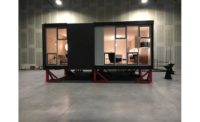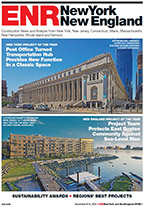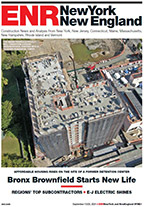Not a day goes by that Walter Baumy, engineering division chief for the New Orleans District of the U.S. Army Corps of Engineers, doesn’t get a call or visit from someone who says he has a better mousetrap a better product or method for bringing the Greater New Orleans Hurricane and Storm Damage Risk Reduction System to 100-year levels by 2011. But since the district is now in an all-out push to meet that deadline by rapidly prosecuting designs and contracts in hand, Baumy is wary of the distractions.

So, in response to the flood of ideas, and at the request of district commander Col. Alvin Lee, the evaluation of innovative proposals now is tasked to three teams at the New Orleans district in a program directly supported by the division commander in Vicksburg, Miss. They are comprised of research and development experts from the Corps, private industry and academia. One team evaluates ideas based on their inventiveness, another studies criteria and applications and a third considers practical issues of execution. “One of the key drivers in our asking to form these teams is that our focus can remain on the hurricane system and not be diverted when a complex problem or issue comes up,” Lee says. “We can hand it off and they can run with it.”
Dennis Kamber, senior vice president and director of water resources practice at Arcadis U.S. Inc., which has designed many flood defenses for the Corps since Katrina, says the Corps has explored many new technologies since that storm but the looming deadline leaves no more time for the numerical and physical modeling and the proof of concept trials that are needed to adopt new approaches. “There isn’t time...and they just don’t want to work with an unknown,” Kamber says.
The teams provide an avenue to the best and the brightest in the industry, Lee says. “It’s not just engineering numbers crunching, but engineering judgment.”
Baumy offers as an example work the criteria and applications team did with the University of Texas to improve software the university developed with the Corps years ago for slope stability analysis. It now delivers more reliable factor-of-safety calculations for levee designs.
Another example is how the project execution team developed the idea of using the Early Contractor Involvement contracting method to facilitate delivery of the Gulf Intracoastal Waterway West Bank Closure Complex, a combination storm surge barrier and pump station that is expected to be the largest single project in the system. “We are looking at ECI to solicit contractor input as it is being designed,” Baumy says.

LEE
“The design criteria we are working on here is not just for New Orleans and the 2011 work,” Lee adds. For example, the innovation team is exploring the use of geotubes filled with sand as temporary barriers to provide protection in coastal areas not part of the federally funded, hurricane storm damage reduction system.
“We look at everything,” Baumy says. He recalls a fellow who brought in a sample of material for proposed use for armoring levees, “something he is using under a racetrack in Oklahoma,” Baumy says. The product is a polymer-stabilized sand material designed by ProLine Products LLC, Guthrie, Okla. “The Corps is interested in it because it has a proven track record of twenty years,” says Don McBride, CEO and president
“What we are doing will advance the state of practice, the way structures and design techniques are analyzed. A lot of good benefits will come out of this,” says Robert Fuqua, innovation team head.



